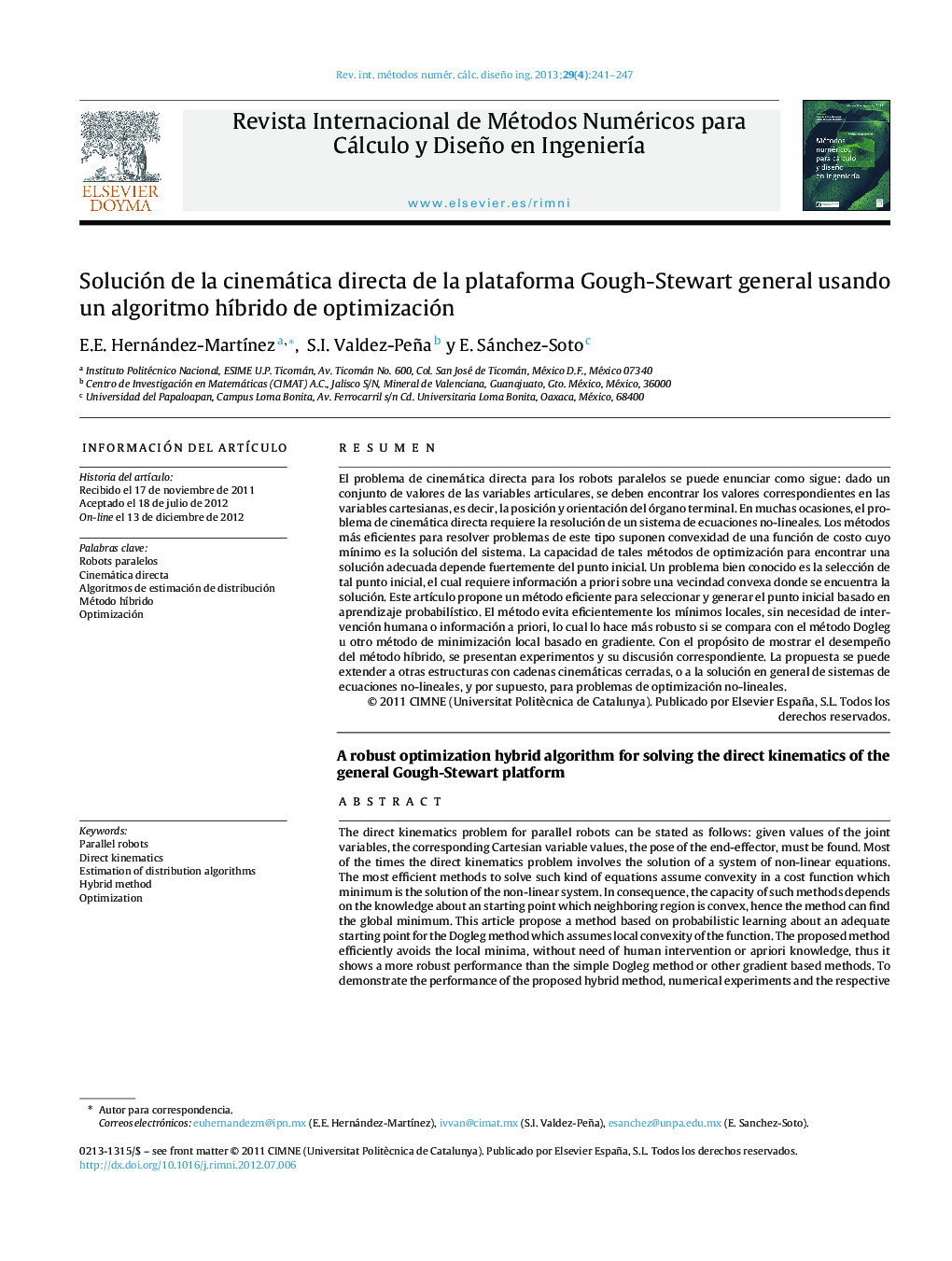| کد مقاله | کد نشریه | سال انتشار | مقاله انگلیسی | نسخه تمام متن |
|---|---|---|---|---|
| 1702651 | 1012348 | 2013 | 7 صفحه PDF | دانلود رایگان |

ResumenEl problema de cinemática directa para los robots paralelos se puede enunciar como sigue: dado un conjunto de valores de las variables articulares, se deben encontrar los valores correspondientes en las variables cartesianas, es decir, la posición y orientación del órgano terminal. En muchas ocasiones, el problema de cinemática directa requiere la resolución de un sistema de ecuaciones no-lineales. Los métodos más eficientes para resolver problemas de este tipo suponen convexidad de una función de costo cuyo mínimo es la solución del sistema. La capacidad de tales métodos de optimización para encontrar una solución adecuada depende fuertemente del punto inicial. Un problema bien conocido es la selección de tal punto inicial, el cual requiere información a priori sobre una vecindad convexa donde se encuentra la solución. Este artículo propone un método eficiente para seleccionar y generar el punto inicial basado en aprendizaje probabilístico. El método evita eficientemente los mínimos locales, sin necesidad de intervención humana o información a priori, lo cual lo hace más robusto si se compara con el método Dogleg u otro método de minimización local basado en gradiente. Con el propósito de mostrar el desempeño del método híbrido, se presentan experimentos y su discusión correspondiente. La propuesta se puede extender a otras estructuras con cadenas cinemáticas cerradas, o a la solución en general de sistemas de ecuaciones no-lineales, y por supuesto, para problemas de optimización no-lineales.
The direct kinematics problem for parallel robots can be stated as follows: given values of the joint variables, the corresponding Cartesian variable values, the pose of the end-effector, must be found. Most of the times the direct kinematics problem involves the solution of a system of non-linear equations. The most efficient methods to solve such kind of equations assume convexity in a cost function which minimum is the solution of the non-linear system. In consequence, the capacity of such methods depends on the knowledge about an starting point which neighboring region is convex, hence the method can find the global minimum. This article propose a method based on probabilistic learning about an adequate starting point for the Dogleg method which assumes local convexity of the function. The proposed method efficiently avoids the local minima, without need of human intervention or apriori knowledge, thus it shows a more robust performance than the simple Dogleg method or other gradient based methods. To demonstrate the performance of the proposed hybrid method, numerical experiments and the respective discussion are presented. The proposal can be extended to other structures of closed-kinematics chains, to the general solution of systems of non-linear equations, and to the minimization of non-linear functions.
Journal: Revista Internacional de Métodos Numéricos para Cálculo y Diseño en Ingeniería - Volume 29, Issue 4, October–December 2013, Pages 241–247